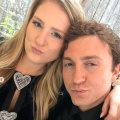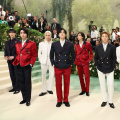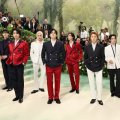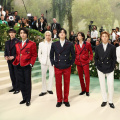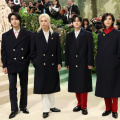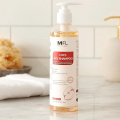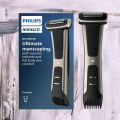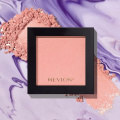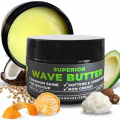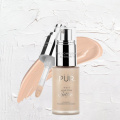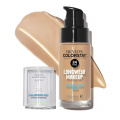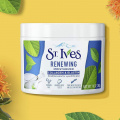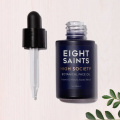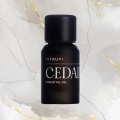Hair Care Tips for Rebonded Hair: A Guide on Maintaining Hair Health
Looking for frizz-free, sleek hair? Opt for the latest hair rebonding treatment. Know your hair care tips for rebonded hair to maintain good hair health.
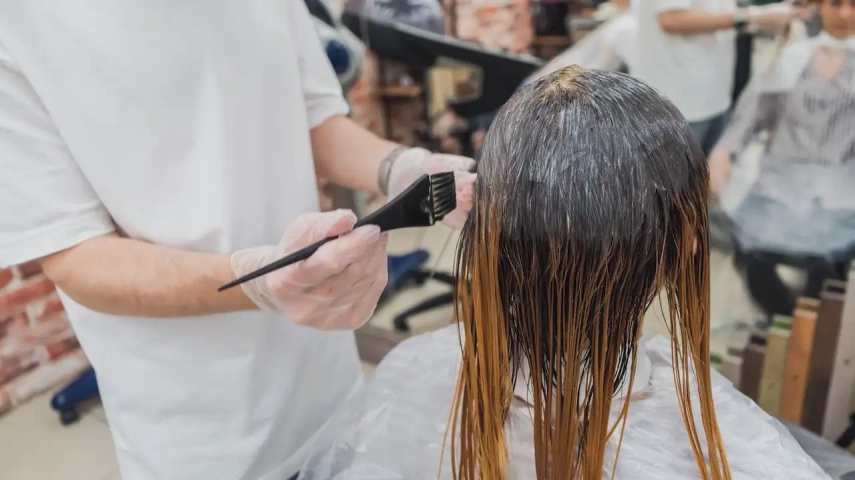
Hair is the crown you never take off, so don’t shy away from investing in it. Protecting and nurturing your hair is a wonderful form of self-care that can leave you feeling invigorated and empowered to take on the world. However, in today’s rat race of balancing work and family, leaves us with no time for regular skin and hair care. Dry, frizzy, and brittle hair has become a worldwide problem for both sexes. Like every other problem, science has devised great ways to obtain that attractive, long, lustrous mane without having to spend hours on homely hacks — it is known as hair rebonding. But what’s important is the care of your beautiful tresses after the hair rebonding treatment Let’s read on about some of the hair care tips for rebonded hair.
What is Hair Rebonding
Hair is essentially a protein. Each strand of hair contains a region called the cortex, located between the outer lining, the cuticle, and the inner bulk, the medulla. The cortex is high in proteins like keratin and cysteine. These proteins are interlinked with hydrogen bonds and disulfide bonds. The structure of these bonds determines your the hair type - whether it is straight, wavy, or curly.
Hair rebonding is a chemical treatment of the hair that changes the strand’s natural structure from within. It is also called "Japanese hair straightening” and is known to give long-term results.
Hair rebonding uses chemicals and heat together to break, relax, and rearrange these bonds (primarily the disulfide bonds), to make the hair strand straight and frizz-free.
The chemicals used in hair rebonding are alkaline, with pH values above 9.0. This alkalinity ensures better absorption of the chemical by each of your hair strands. These are referred to as "relaxers,” as they relax the disulfide bonds to straighten the hair structure. Relaxers can be broadly grouped into "lye” relaxers, no?lye relaxers, and “thio” relaxers.
Before we proceed, let's quickly have a look at all 3 compounds:
1. Lye Relaxer
They are also known as soda-containing straighteners and have sodium hydroxide as an active component. They are highly alkaline and can irritate the scalp.
2. No-lye Relaxers
They contain ammonium thioglycolate, lithium, or guanidine hydroxide. The products are referred to as "non-hydroxide straightening compounds." Compared to sodium hydroxide, they are less irritating.
3. Thio-Relaxers
This included ammonium thioglycolate (AT) as its star ingredient. Japanese hair straightening, or "hair rebonding," primarily revolves around this compound. They do not contain strong alkalis like hydroxides and are the least irritating to the hair and scalp (1), (2).
Hair care tips for rebonded hair are very important to maintain hair health after a rebonding treatment with chemical compounds. Now that we have a basic idea about the concept of hair rebonding, let’s understand how we go about the process.
Hair Rebonding Process
Rebonding hair is a joint effort of both relaxers (the straightening compounds) and heat. The duration of the treatment varies from 3 to 8 hours, depending on the length of your hair. It first involves a consultation with a hair expert.
A trained cosmetologist at your neighborhood hair salon examines your hair before hair rebonding. This is the most important step, where you can present your hair problems to the expert. Hair rebonding treatment is indicated in the following cases:
- Dry hair
- Dull hair
- Frizzy hair
- Unmanageable hair
Rebonding thin, dry, color-treated, bleached, or heat-damaged hair could cause more harm than good. Understand your expectations and hair care tips for rebonded hair thoroughly before opting for the procedure.
The hair rebonding kit has the following items:
- A gentle shampoo
- A hairdryer
- Brush for straightening
- A straightening iron
- Steamer
- A relaxer agent
- A neutralizing agent
The basic procedure involves 3 main steps:
Step 1: The reducing phase using the hair relaxer: The hair is washed with a mild shampoo, rinsed, and naturally dried. Then, to ensure that no hair is missed, your hair will be divided into several sections. Every section of your hair will be coated with the relaxer using plastic boards. The plastic boards are used to make sure that the product has completely coated every hair strand.
The agent is left on for thirty minutes. The product may be used for longer than 30 minutes if your hair is extremely dry, frizzy, or curly. Intermittent steam treatment is also applied for better absorption.
The keratin protein and the relaxer interact, breaking the structural bonds in the hair. This action softens and straightens the hair. The keratin breaks down, allowing the hair to be relaxed and straightened (4).
This step continues until every bit of hair is adequately softened. Following this, your hair is rinsed thoroughly.
Step 2: Neutralizing and heat treatment: Keratin lotion is applied, and the hair is again sectioned. This follows the application of the neutralizer for 30 minutes. The hair is then straightened at 180°C with a ceramic flat iron. After that, it is rinsed with cold water.
Cross-links start to form after the alkaline agent is washed and neutralizing (slightly acidic) agent is used. This agent stabilizes the altered shape of the hair fibers (4).
Step 3: Rinsing and drying [3]: A serum is usually applied to your hair following rinsing and blow-drying. Using a flat iron, straighten your hair. Adding conditioner to the straightening solution may have the added benefit of improving hair strength and protecting the hair proteins (5).
Hair rebonding treatment is a joint venture of specialized hair products and heat treatment. It alters the entire anatomy of the hair. So, shortly after the procedure, your hair is extremely susceptible to damage and needs intensive care. Here are some hair care tips for rebonded hair for all of you who have recently done it or are planning to.
Tips to Take Care of Rebonded Hair
Your hair undergoes a substantial change during the rebonding procedure. So you have to give it some rest and a lot of nourishment to reap the best results. For starters, here is the most commonly advised hair regimen post-bonding (6).
The first 72 hours post-rebonding treatment is the most crucial. Maintain the following precautions, then.
1. Avoid Washing Hair in the Next 3 Days
Your hair takes a few days to adapt to its new structure. To achieve the best results, you should keep it dry for at least 3 days (or 72 hours) following the procedure. It's crucial to keep your hair dry because moisture can ruin the results of your treatment.
2. Wear a Shower Cap
Do not allow the bathing water to touch your hair. So protect it with a cap.
3. Avoid Tying Your Hair Up:
It is as good as crumpling a freshly ironed shirt. Hair bands and pins can leave permanent creases. Let your hair loose for the first three days. Also, go to bed with free hair.
4. Avoid the Sun or Any Heat Sources.
Do not step out too much to prevent UV damage to your sensitive hair. Eat healthy to boost the protein supply to the hair cuticle. This ensures faster settling of the newly treated hair.
These are some of the immediate tips for taking care of rebonded hair.
Here are some general guidelines to take care of your rebonded hair like a pro:
5. Avoid Washing Your Hair too Often
Wash the hair and keep your scalp squeaky clean. But do not overdo it. 2 - 3 washes per week are sufficient. Problems like dandruff and hair loss are often due to an unclean scalp with clogged follicles. Give yourself hot oil massages once in a while and wash your hair with a gentle but effective shampoo to prevent this.
6. Use a Mild Shampoo
Use a mild, sulfate, and paraben-free shampoo to wash your hair. Not just for rebonded hair, these shampoos are advisable for natural hair as well.
7. Condition the Hair for an Extra Few Minutes
The rebonded hair is subjected to too many products. It needs nourishment externally to keep the shine going. Apply conditioner to your hair after you've washed it, and give it a few extra minutes to absorb the moisture.
8. Hair Serum
Hair serums are concentrated liquid formulations that are silicone based and sometimes enriched with micronutrients like vitamin E. In contrast to conditioners, they are a leave-in treatment for dull, frizzy hair and retain the moisture in each hair strand.
9. Use Cold Water or Room Temperature Water for Hair Wash
Hot water baths rejuvenate your body but create havoc for your hair. It strips the hair shafts of their natural oils. It is worse for rebonded hair, since it may dry the hair severely. By sealing the hair shafts, cold water stops moisture loss and damage. This will not only keep your hair moisturized but also enhance its health and maintain its shine. Lukewarm showers are advised if you have trouble handling cold water.
10. Stay Away from Heat-Styling Gadgets
The rebonding treatment itself uses a considerable amount of heat. So do not add to this by using too many styling products like blow-dryers, and curlers. You could switch to a blow dryer with the cool setting to dry your hair faster, or simply air dry it!
11. Trim the Ends of Your Hair Strands Every 6-8 Weeks.
The long process of rebonding subjects the hair shaft to an array of chemical compounds and heat. This results in a split end at times. Visit your stylist and get a quick trim in about 6 weeks to maintain hair health.
12. Use a Wide-Toothed Comb
A wooden comb with spaced-out teeth reduces the friction between the hair and the comb while brushing. This reduces the chances of hair breakage.
13. Cover Your Hair from too Much Sun
The harmful UV rays of the sun are damaging to hair proteins. Protecting your hair from it is a great way to preserve its health. You can apply a hair serum with sunscreen, or cover your hair with a cap, hat, or umbrella when stepping out in the morning hours.
14. Skip Getting Wet in the Rain
Rainwater isn’t pure water anymore. Air pollution has made it highly acidic with suspended dust particles. If you happen to get drenched in the rain, make sure to wash your hair as soon as you get home. The contaminants and salts in rainwater are terrible for your hair and can do a lot of harm.
15. Try to Avoid Other Hair Treatments like Dyes and Coloring.
It is better to postpone any heat or chemical-based hair treatment for the next few months. Subjecting your hair to bleaching and coloring can make the hair shafts brittle, causing breakage.
16. Diet
Maintaining health on the inside is the first step to achieving healthy skin and hair on the outside. A balanced diet, loaded with proteins, and micronutrients, is the ultimate key to your lustrous locks. No amount of external treatment can glorify unhealthy hair.
17. Exercise
Regular physical activities and workouts maintain the blood flow in the body. When sufficient blood reaches the scalp, it nourishes the hair follicles with the necessary vitamins, minerals, and proteins. This keeps the hair strong and healthy.
Hair rebonding is a commendable way to obtain straight, frizz-free, sleek, and shiny hair, but its effects can wear off unless maintained well (6). So, be mindful of its side effects and take precautions accordingly.
The eyes see what the mind knows. Rightly so, without knowing the side effects of hair rebonding, the tips and tricks for maintaining rebonded hair seem baseless. We shall now discuss all the aftereffects of hair rebonding.
Side Effects of Hair Rebonding
Like all esthetic and cosmetic procedures, hair rebonding also comes with its share of side effects. A study was done to find out if chemical hair relaxers have adverse effects. It stated that chemical relaxers are known to have very few serious systemic side effects, but there is a clear link between hair relaxers and dermal (of skin and hair) side effects [7].
Check out some of these side effects of hair rebonding:
- Frizzy hair, dandruff, hair loss, thinning and weakening of hair, graying of hair, and split ends are the most common side effects that may occur.
- Prolonged exposure to these chemicals could result in lesions and burns on the scalp.
- Formaldehyde-based hair rebonding agents were frequently used in the past, as opposed to the "thiol"-based hair relaxers that are widely used today. Formaldehyde is a skin irritant that causes allergies in the scalp, eyes, and nose and induces breathing difficulty (8).
- Rebonding hair, followed by touch-ups, subject hair to too many chemicals. Hair turns brittle and sheds at a faster rate. Hair loss is a common side effect.
- Rebonding is a time taking and expensive procedure. Touch-ups could be heavy on your pockets.
Conclusion
The use of hair rebonding treatment has brought the world of fashion to its pinnacle. Despite its acceptance, it is crucial to understand the benefits and drawbacks of the process beforehand to prevent issues. It is a permanent smoothing procedure and cannot be reversed until the new hair starts growing out.
If you have decided to go through with this treatment, then before you step into the salon, learn about the hair care tips for rebonded hair, to help you keep the hair healthy.
Sources :
1. Hair Cosmetics: An Overview
https://www.ncbi.nlm.nih.gov/pmc/articles/PMC4387693/#ref5
2. What do we need to know about hair straightening?
https://dx.doi.org/10.18203/issn.2455-4529.IntJResDermatol20213356
3. Hair Salon Procedures
4. Hair Care and Hair Care Products
https://sci-hub.se/https://doi.org/10.1016/S0738-081X(00)00133-4
5. Hair fiber characteristics and methods to evaluate hair physical and mechanical properties
https://www.scielo.br/j/bjps/a/XZrwDJrKKXh4Q3JwswHJ4vq/
6. Hair Smoothening Treatment and Tips to Avoid Side Effects
https://www.emedihealth.com/skin-beauty/hair-scalp/hair-smoothening-treatment
7. Chemical Hair Relaxers Have Adverse Effects a Myth or Reality
https://www.ncbi.nlm.nih.gov/pmc/articles/PMC3746223/
8. Hair Salons: Facts about Formaldehyde in Hair Products
https://www.osha.gov/hair-salons#health_risks
ALSO READ: 12 Best hair care tips to follow at night for healthy locks





 JOIN OUR WHATSAPP CHANNEL
JOIN OUR WHATSAPP CHANNEL

